What makes this trip special?
Mangroves & freshwater marshes
Manglares- Churute Reserve
Accessible forested slopes
Buenaventura
High cloudforest
Cajanuma
Humid temperate forest
Tapichalaca
Temperate, subtropical & foothill zones
Loja - Zamora road
High temperate elfin forest
Gualaceo-Limon road
Dry forest endemics and Raptors
Cerro Blanco or Santa Elena Peninsula
Itinerary
-
- Day Overnight
-
1
Guayaquil
-
2
Buenaventura
-
3
Buenaventura
-
4
Loja
-
5
Loja
-
6
Tapichalaca
-
7
Tapichalaca
-
8
Loja
-
9
Zamora
-
10
Zamora
-
11
Cuenca
-
12
Cuenca
-
13
Gualaceo
-
14
Guayaquil
-
15
Guayaquil
-
16
Guayaquil
-
16
Cerro Blanco
-
- For the detail of each day click the ‘Day-by-day’ tab above.
Day-by-day itinerary for 'Birds of Southern Ecuador'
Podocarpus NP: Cajanuma Sector
Loja - Vilcabamba - Tapichalaca
Tapichalaca Reserve: Quebrada Honda
Podocarpus NP: Bombuscaro sector
Guide prices for 'Birds of Southern Ecuador'
| options |
based on |
all year |
low season |
mid season |
high season |
peak season |
other season |
| guide price (with regular driver) |
2 people sharing |
£6,000 |
|
|
|
|
|
| guide price (with bird guide) |
2 people sharing |
£7,000 |
|
|
|
|
|
| New alternative route (with bird guide) |
2 people sharing |
£5,195 |
|
|
|
|
|
Prices are per person and include:
- all travel in Ecuador
- all accommodation
- meals as indicated B=breakfast, L=lunch, D=dinner
- excursions as described
Prices do not include:
- international flights
- travel insurance
- airport and departure taxes
- items of a personal nature such as drinks, tips, laundry, etc
- any optional excursions you may buy locally
Customer reviews for
'Birds of Southern Ecuador'
Recent reviews are shown here from holidays based on this initial design. In each case the itinerary may have been modified
(a little or a lot) to suit the individual traveller.
Seasonal information for 'Birds of Southern Ecuador'
Hotels for 'Birds of Southern Ecuador'
Day 1
Oro Verde, Guayaquil
Average rating 4.5 (11 ratings)
Hotel Oro Verde is strategically located in the heart of downtown Guayaquil, just 2 miles away from Guayaquil's international airport. It is the only member of The Leading Hotels of the World chain in Ecuador. There are 230 luxury rooms, including a dedicated 'club floor' especially designed for business travellers. Each room is equipped with a mini bar, radio, direct dialing telephone, a safe for your valuables, cable TV and broadband internet connection. There are also three restaurants, a bar, delicatessen, room service, a swimming pool, fitness and business centre, casino, shops, turkish bath and different types of massages offered in the spa.
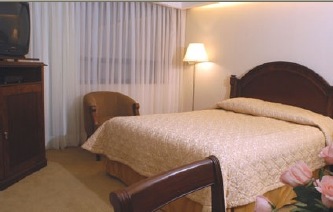
Deluxe room
Days 2 - 3
Buenaventura Lodge
This is a simple and remote lodge primarily for birdwatchers. The area is renowned for being one of the ornithologically richest and most easily accessible sites in the Ecuadorian Andes. It protects a narrow zone of cloud forest habitat on the otherwise seasonally dry west slope of the Andes in Southern Ecuador.
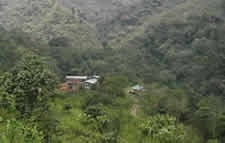
Aerial view of the lodge
Days 4 - 5
Casa Lojana
Loja
The hotel is efficiently run by the University of Loja, who use it as a learning tool for their students in hotel industry courses.
The building that houses the hotel was once an elegant home, which has since been converted. There are gardens, balconies, a fine restaurant and luxurious, well-decorated rooms.
Hot showers in full bathrooms, TV cable, internet access, excellent restaurant and other amenities.
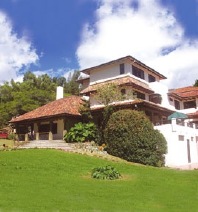
Exterior hotel
Days 6 - 7
Tapichalaca Lodge (Casa Simpson)
Tapichalaca Lodge "Casa Simpson" is run by the Jocotoco Foundation. It offers basic, wooden, bunk house style accommodation which is shared with researchers, the reserve's guardian, and serious birders who come hoping to see the famous Jocotoco Antpitta (Grallaria ridgelyi) discovered in 1997. The Tapichalaca reserve in which it is located is an unusually wet area of temperate-zone forest on the eastern slope of the Andes 2000m to 3400m elevation. Other key species found here are the Rufous-capped Thornbill and the Masked Saltator. NOTE: there are three rooms for visitors: 1 x triple (a set of bunks + a single), 1 x sleeps 5 (2 sets of bunk beds and a single), 1 x matrimonial. There are shared bathrooms and Wi-Fi in the communal area.
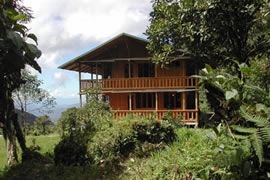
Lodge
Day 8
Casa Lojana
Loja
The hotel is efficiently run by the University of Loja, who use it as a learning tool for their students in hotel industry courses.
The building that houses the hotel was once an elegant home, which has since been converted. There are gardens, balconies, a fine restaurant and luxurious, well-decorated rooms.
Hot showers in full bathrooms, TV cable, internet access, excellent restaurant and other amenities.

Exterior hotel
Days 9 - 10
Copalinga Lodge
Zamora
Just 3km from the Bombuscaro entrance of the Podocarpus national park this is a birders lodge sitated at 900m above sea level (approx 3,000ft). It has six wooden guest cabins each with a private bathroom and a balcony, and there is hydro-electric power provided 24 hours a day, with some limitations so as to not overload the system. As well as the hydro-electric power there is a back-up generator and in the event of disruption to all power, they offer to recharge cameras and other electronic devices at their office in Zamora town. The restaurant on site is only available to guests staying at the lodge, and serves breakfast from 5.30 am, whilst there is also a bar open in the evenings.
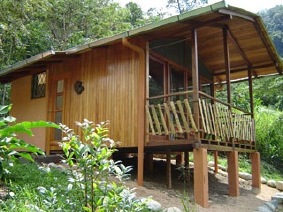
Cabin exterior
Days 11 - 12
Crespo
riverside, downtown
Hotel Crespo is a good mid-range hotel option in Cuenca overlooking the Tomebamba river.
Each room has private bathrooms, mini bar, heating, AM - FM Radio, colour televisions with cable TV with 50 channels in 5 languages, as well as international and national direct line telephone. Some rooms have views over the river.
There is a restaurant and bar on-site
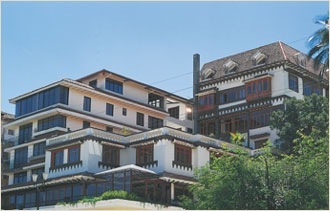
Exterior hotel
Day 13
Hosteria Uzhupud
40 mins NE from Cuenca
An attractive, well appointed hotel situated in the countryside 40 mins drive NE of Cuenca this hotel has 36 rooms all with private bathroom. The hostería has hiking trails, horses for riding, tennis courts, a swimming pool and sauna in addition to soccer field, volleyball court and children's games. Uzhupud means "hot chilli pepper valley" in a mix of Quichua and Canari languages.
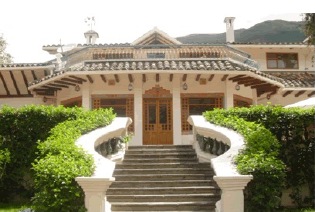
Hotel entrance
Day 14
Crespo
riverside, downtown
Hotel Crespo is a good mid-range hotel option in Cuenca overlooking the Tomebamba river.
Each room has private bathrooms, mini bar, heating, AM - FM Radio, colour televisions with cable TV with 50 channels in 5 languages, as well as international and national direct line telephone. Some rooms have views over the river.
There is a restaurant and bar on-site

Exterior hotel
Day 15
Oro Verde, Guayaquil
Average rating 4.5 (11 ratings)
Hotel Oro Verde is strategically located in the heart of downtown Guayaquil, just 2 miles away from Guayaquil's international airport. It is the only member of The Leading Hotels of the World chain in Ecuador. There are 230 luxury rooms, including a dedicated 'club floor' especially designed for business travellers. Each room is equipped with a mini bar, radio, direct dialing telephone, a safe for your valuables, cable TV and broadband internet connection. There are also three restaurants, a bar, delicatessen, room service, a swimming pool, fitness and business centre, casino, shops, turkish bath and different types of massages offered in the spa.

Deluxe room